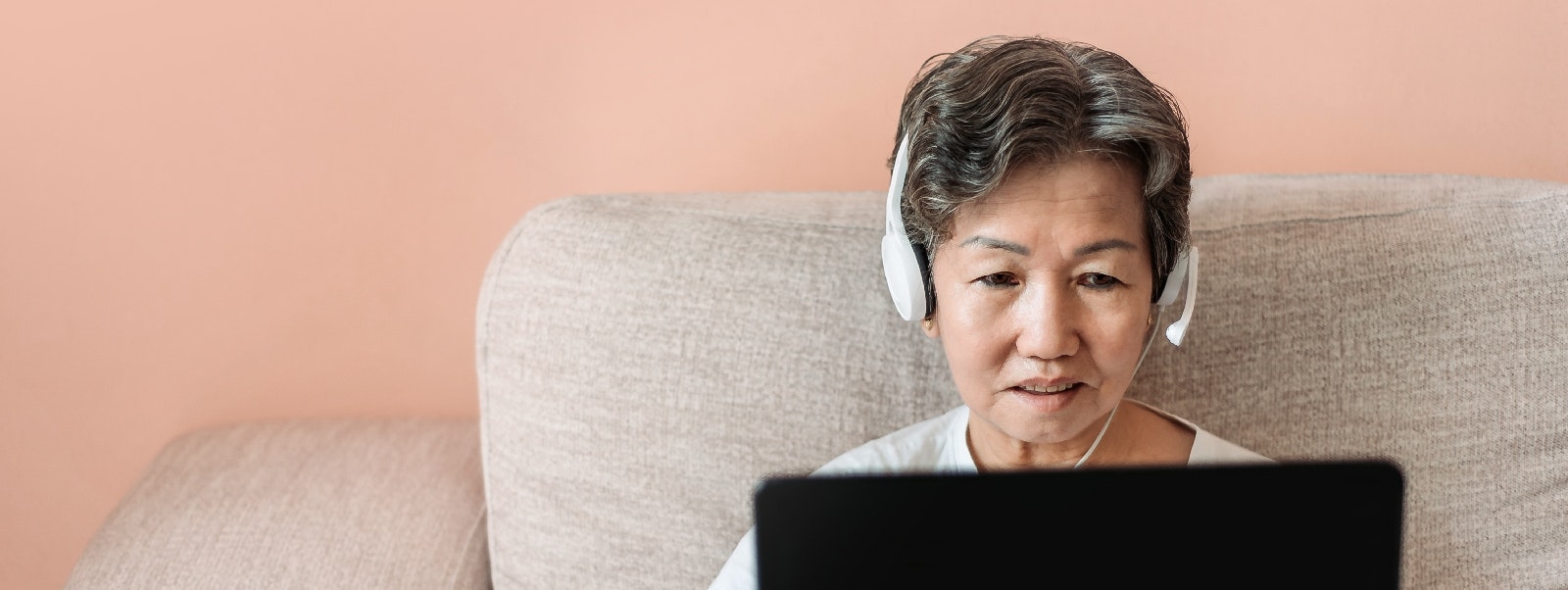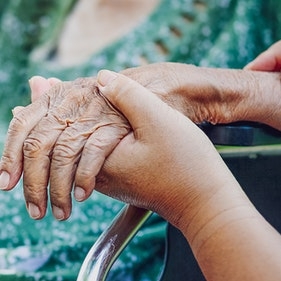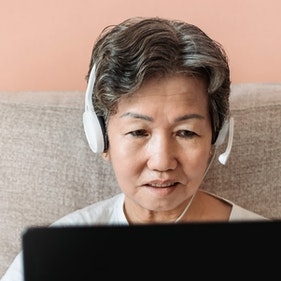This article was first published on October 30, 2020.
The disproportionate impact of COVID-19 on seniors – globally, about 80 percent of deaths – calls for a major transformation in long-term care. Singapore is no exception, given that already 22 percent of its population is over the age of 60 – the country will need to ready its long-term care for the new reality ahead.
In our study, we examine how Singapore’s long-term care providers – nursing homes, daycare centers, and homecare providers – have navigated the first six months of the pandemic. While outbreaks in the country’s long-term care institutions have been minimal, there have been other impacts to the normal way of life for seniors and staff in the sector, from various regulations and advisories. Nursing homes and daycare have borne the brunt of the impact, with stopgap measures and discontinued services, while homecare has reached a new inflection point, with great potential for continued customer and practitioner adoption.
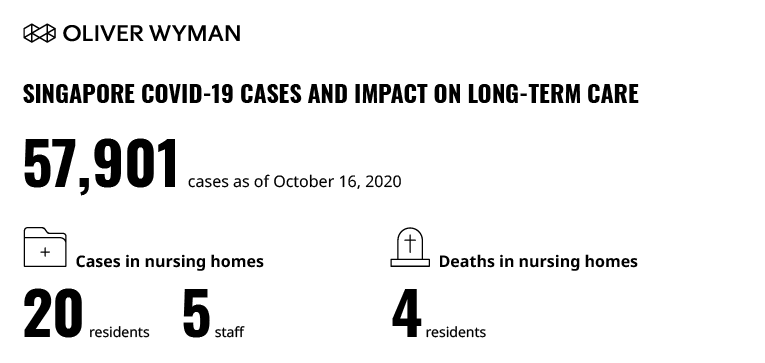
These challenges have severely disrupted the routine nature and predictability that such a sector promises to both seniors and their caregivers, many of the latter whom had to take on greater responsibilities in the absence of normal care services. The crisis brought concerns over the senior population to the forefront of government policymaking, but it also demonstrated the importance of digital and technologies and the public’s willingness to use them. Hence, there are key opportunities from COVID-19 for the sector to become more pandemic-resilient, as well as to accelerate its transformation towards an integrated, tech-enabled model of the future.
We focus on six opportunities that are immediately actionable and have strong tech applicability. Many of these opportunities can leverage practical technology solutions that already exist in the market, with their use cases amplified during COVID-19 – examples include remote monitoring, assistive robots, and social connectivity platforms. The six opportunities are:
Pivot to digital-led care models that are integrated closely with offline models. Examples include telehealth, using remote monitoring and back-end analytics, and virtual daycare.
Boost preventive health and wellness. Empower patients and plan for future disruptions by deploying sensor-based technology such as wearables and remote devices for medication adherence.
Retrofit existing spaces in facilities to minimize the risk of infection. Redesign nursing homes and daycare facilities and introduce devices such as assistive robots and AI-based solutions (software for CCTV facial recognition and temperature screening, for example).
Empower the workforce for the future. Use lessons from COVID-19 to redesign jobs and reorganize teams; engage and upskill volunteers; free up staff using technology such as remote monitoring, IoT-enabled administrative systems, and assistive robots.
Place greater emphasis on mental health and wellbeing in care planning. Focus on social connectivity through digital platforms and VR-based programs.
Provide greater support for primary caregivers via upskilling and wellbeing initiatives to better prepare them to navigate uncertainties. This can be done through digital communities and training for caregivers.
Ultimately, in Singapore, we imagine a future where aging-in-place is the clear default, with accessible and diverse care options at home and a blended program of online and offline daycare services. Nursing homes as they exist today – with multi-bed wards and multi-year stays – must be reconsidered, with more habilitative residential options desperately needed.
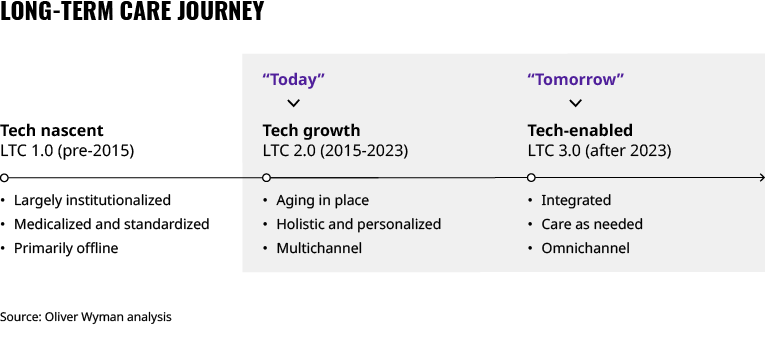
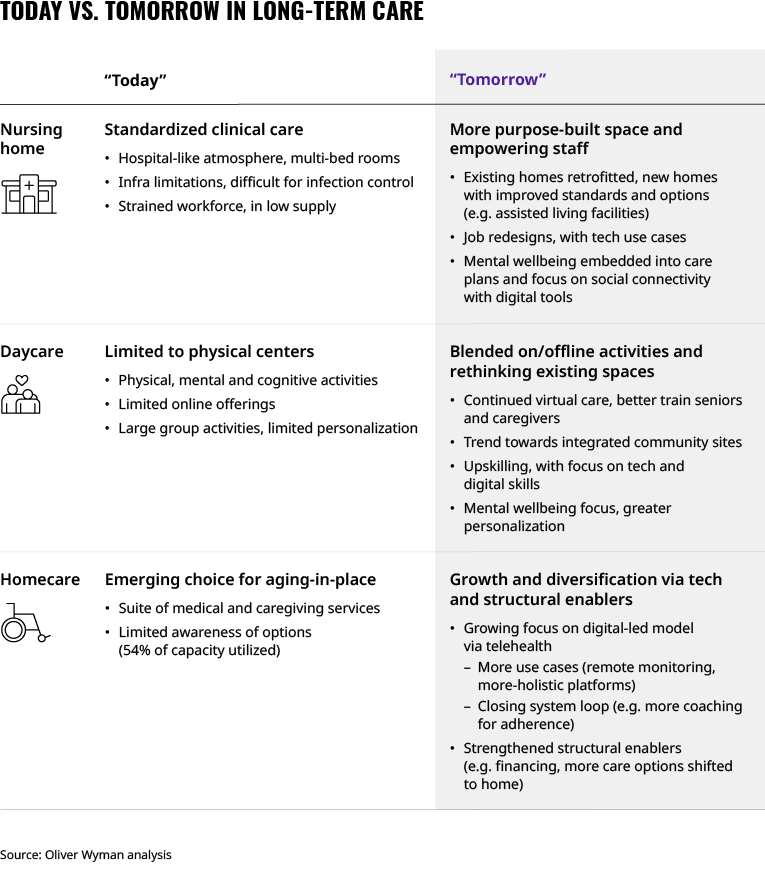
This report was developed in collaboration with the Lien Foundation, a Singapore-based philanthropic organization focused on innovative solutions in senior care.


